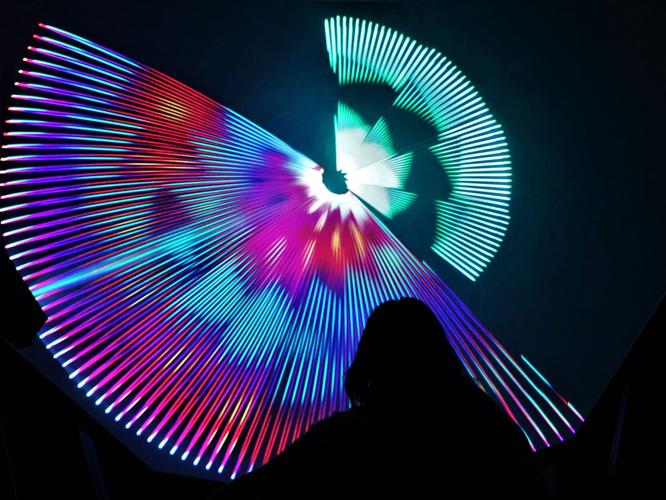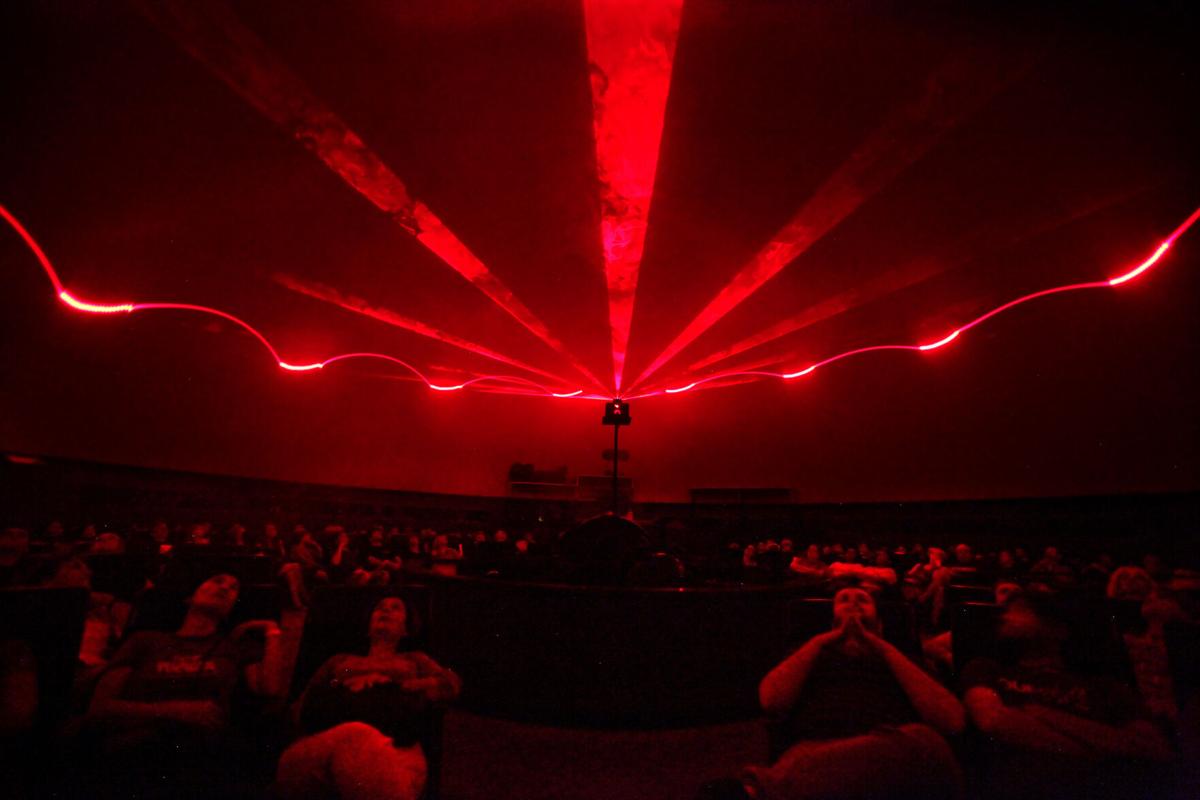The University of Arizona’s Flandrau Science Center & Planetarium is adding two new laser shows to its Laser Light Music Nights lineup this summer.
Starting in July, Flandrau will begin showing Laser (Lady) Gaga and Laser Journey in the planetarium’s theater located at 1601 E. University Blvd.
The new shows will join the planetarium’s lineup of other hour-long themed shows including “Stranger Things” and Taylor Swift. The classic laser show for Pink Floyd’s “Dark Side of the Moon” has been a staple show at Flandrau since the 1970s.

An individual enjoys the Laser Taylor Swift show at the Flandrau Science Center & Planetarium in Tucson.
But how did Flandrau settle on Laser Gaga and Laser Journey?
With a little help from Tucsonans.
“We have Laser Gaga which is our newest show that we've just acquired the rights to play,” said Nick Letson, the marketing and communications manager for Flandrau. “And that came about from a vote that we took through our newsletter and through our Facebook and Instagram audiences to see, out of a choice of like 15 shows, which one they wanted to see. And that one edged it out by like two votes. So your vote does count.”
Other contenders included shows themed around Daft Punk, Beastie Boys, The Weeknd and more.
Until recently, admission to laser shows and the planetarium were separate. Now, all Laser Light Music Nights ticket holders are also able to visit the planetarium’s science exhibits (including their new Undersea Discovery exhibit) from 6-10 p.m. the day of the show. Tickets for laser shows cost $18 (plus a 95-cent processing fee for online ticket sales).
Letson recommends purchasing tickets in advance as about 95% of their laser shows sell out, he said.
“We're making it so that the whole evening is a laser experience,” Letson said. “We also transformed all of our science exhibit halls into a new evening atmosphere with laser lights on the walls and then music throughout all the halls. So the lighting is different and the ambiance is different. So you can spend an hour before or after the show checking out science exhibits and mingling and doing some of our activities.”

Visitors check out Flandrau’s science exhibits during one of the planetarium’s Laser Light Music Nights.
July’s Laser Light Music Nights kicks off on July 1 with Laser Stranger Things (which covers seasons 1-3), followed by Laser Gaga and Laser Pink Floyd’s “Dark Side of the Moon” on July 15. July's roster concludes with Laser Taylor Swift and Laser Journey on July 22.
“I think we've really upped our game with the new way that we're doing enhanced lighting and music all around the science exhibits,” Letson said. “I hope that people are able to see Flandrau in a new way when they come to Laser Light Music Nights because we have made a lot of changes and (have) a lot of new exhibits. And obviously, new ways of presenting ourselves on a Saturday night to get people excited about science.”
For more information about Flandrau’s Laser Light Music Nights, visit their website.







